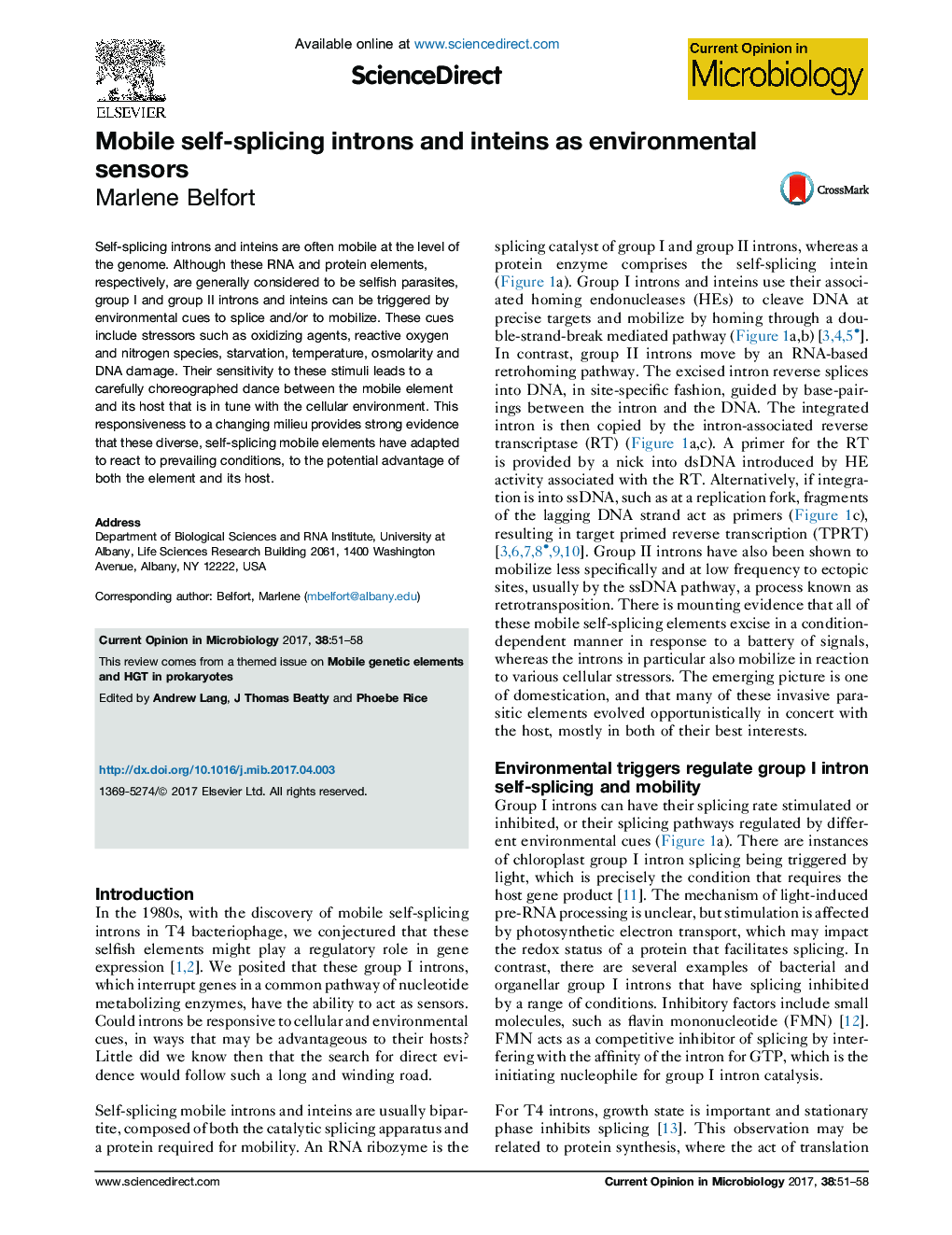| کد مقاله | کد نشریه | سال انتشار | مقاله انگلیسی | نسخه تمام متن |
|---|---|---|---|---|
| 5671692 | 1593031 | 2017 | 8 صفحه PDF | دانلود رایگان |

- Mobile self-spicing introns and inteins have been surmised to play a regulatory role.
- There is mounting evidence that these elements respond to environmental cues.
- Stressors can affect splicing and induce mobility of self-splicing introns.
- Inteins can be stimulated to splice by a spectacular array of stressors.
- The emerging picture is one of adaptation of these parasitic elements to their hosts.
Self-splicing introns and inteins are often mobile at the level of the genome. Although these RNA and protein elements, respectively, are generally considered to be selfish parasites, group I and group II introns and inteins can be triggered by environmental cues to splice and/or to mobilize. These cues include stressors such as oxidizing agents, reactive oxygen and nitrogen species, starvation, temperature, osmolarity and DNA damage. Their sensitivity to these stimuli leads to a carefully choreographed dance between the mobile element and its host that is in tune with the cellular environment. This responsiveness to a changing milieu provides strong evidence that these diverse, self-splicing mobile elements have adapted to react to prevailing conditions, to the potential advantage of both the element and its host.
Journal: Current Opinion in Microbiology - Volume 38, August 2017, Pages 51-58